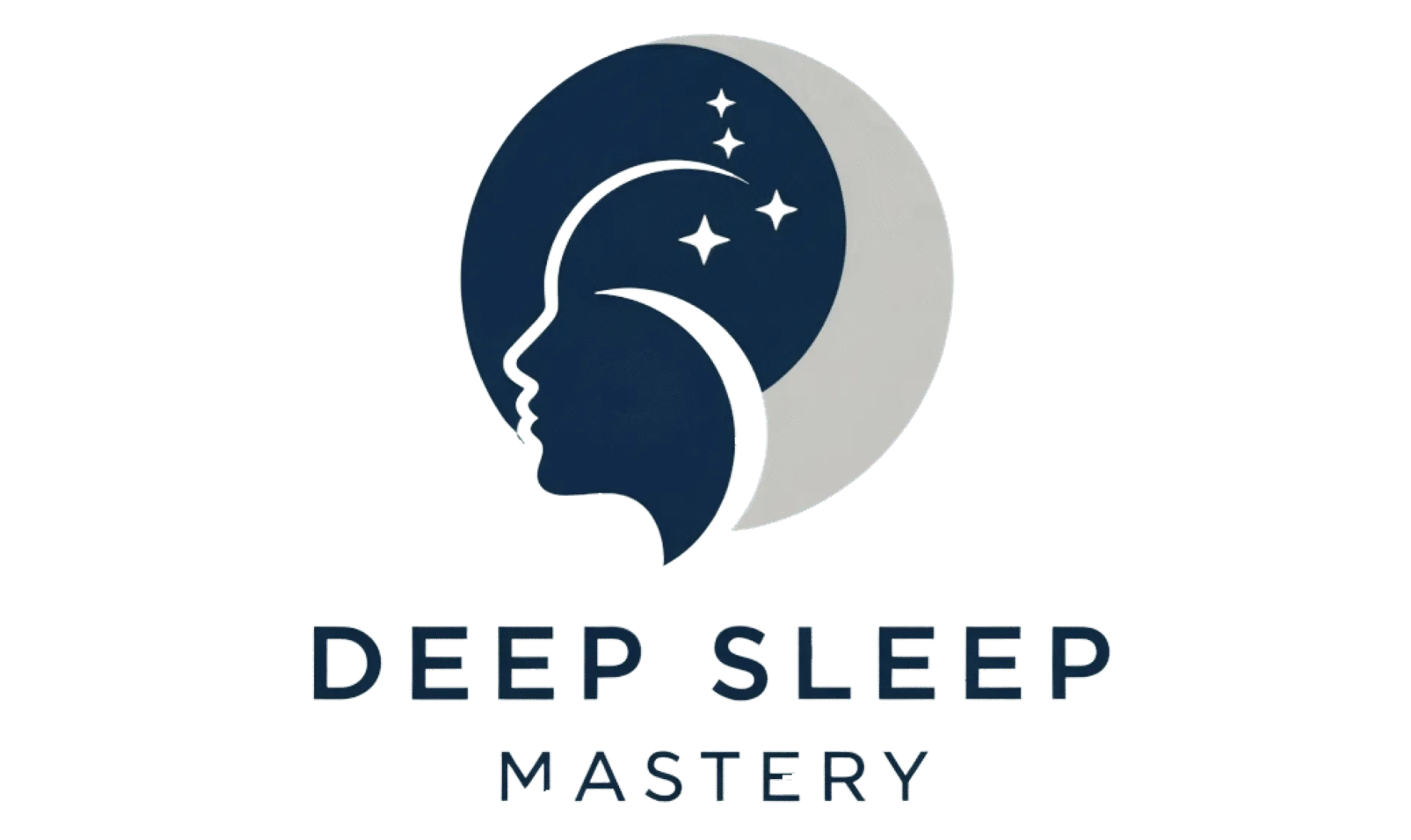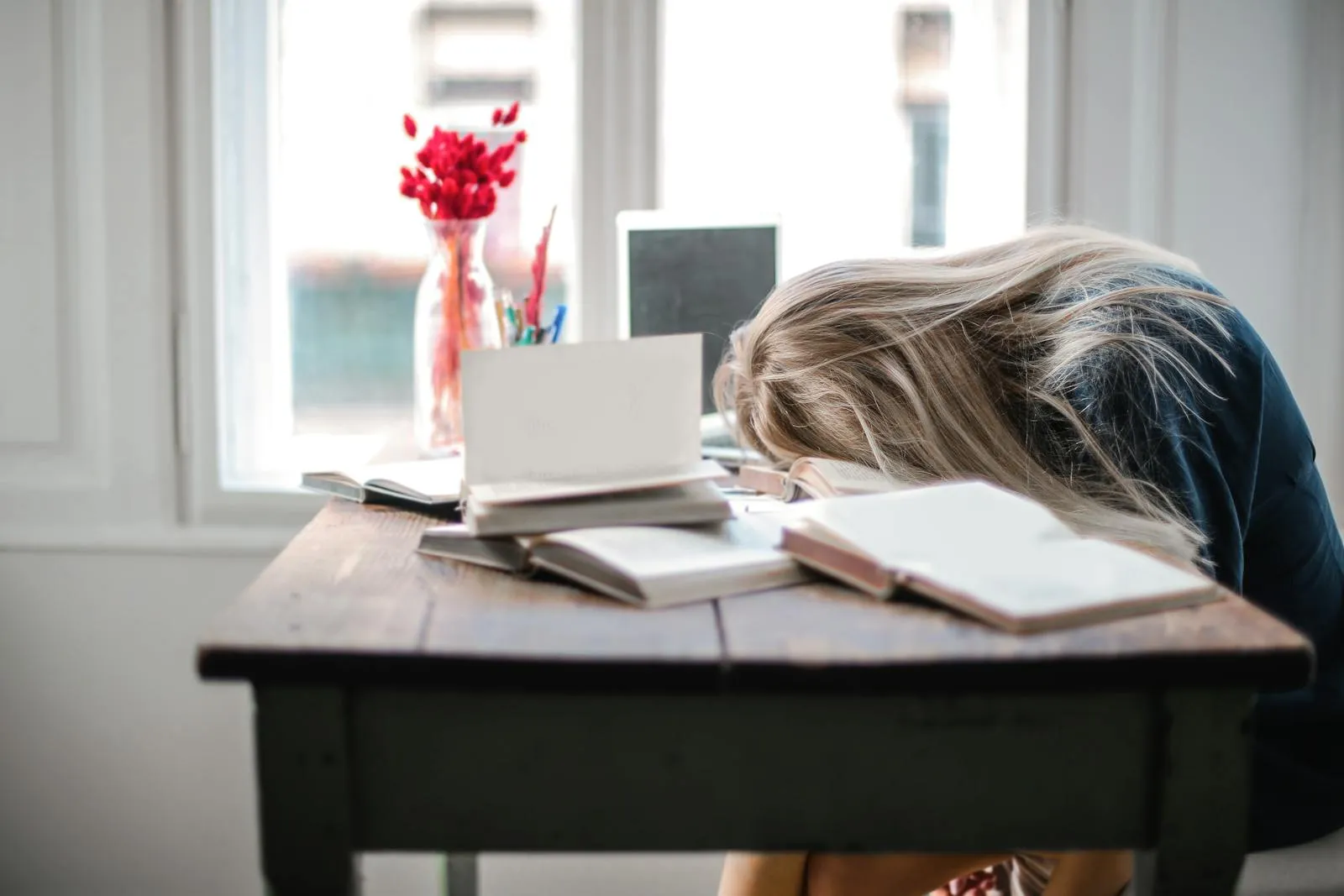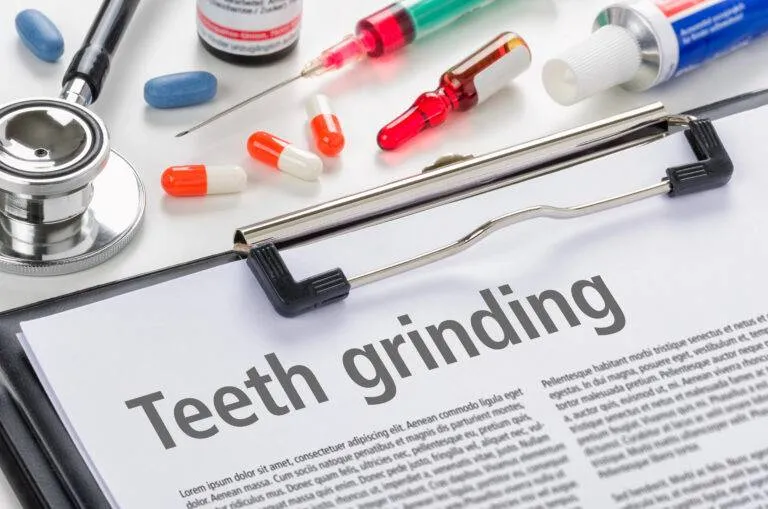Ever lay in bed for hours, watching the clock tick past 2 AM, 3 AM, knowing you have to be up at 6? Or maybe you’re the person who falls asleep instantly but wakes up feeling like you’ve been hit by a truck? Here’s something that’ll blow your mind – about 70 million Americans deal with some form of sleep disorder. That’s almost one in four people!
I spent nearly five years thinking I was just “bad at sleeping.” Turns out, I had legitimate sleep disorders that had names, treatments, and – thankfully – solutions. But here’s the frustrating part: I didn’t even know what to look for. Nobody talks about this stuff until you’re desperate enough to Google “why can’t I sleep” at 4 AM.
Sleep disorders aren’t just about feeling tired. They mess with your relationships, your work performance, your mental health, and honestly, your entire life. The good news? Understanding what you’re dealing with is literally half the battle. Once I figured out what was actually going on with my sleep, everything changed.
Let me walk you through the seven most common sleep disorders that affect real people like you and me. I’ll share what I learned the hard way, what the science says, and most importantly – what actually helps.
Understanding Sleep Disorders: More Than Just “Bad Sleep”
Look, I used to think a sleep disorder meant you either couldn’t sleep at all or you slept way too much. Boy, was I wrong.
A sleep disorder is basically any condition that regularly messes with your ability to get quality sleep. And “quality” is the key word here. You might be sleeping eight hours but still waking up exhausted because something’s disrupting your sleep cycles. Or you could be getting only five hours but feeling pretty decent because those five hours are solid.
The tricky thing about sleep disorders is they’re sneaky. They don’t announce themselves. I remember telling my doctor I was just stressed, my partner was convinced I needed more exercise, and my mom thought I was drinking too much coffee. Nobody considered that my brain and body might actually have a diagnosable problem with sleep.
Here’s what really matters: sleep disorders are incredibly common, totally treatable, and absolutely nothing to be embarrassed about. Your brain does some seriously complex stuff during sleep – way more than just “turning off” for the night. When something disrupts that process, it’s a medical issue, not a character flaw.
I learned this the hard way after years of thinking I just needed to “try harder” to sleep better. Spoiler alert: you can’t willpower your way out of a sleep disorder any more than you can willpower your way out of needing glasses.
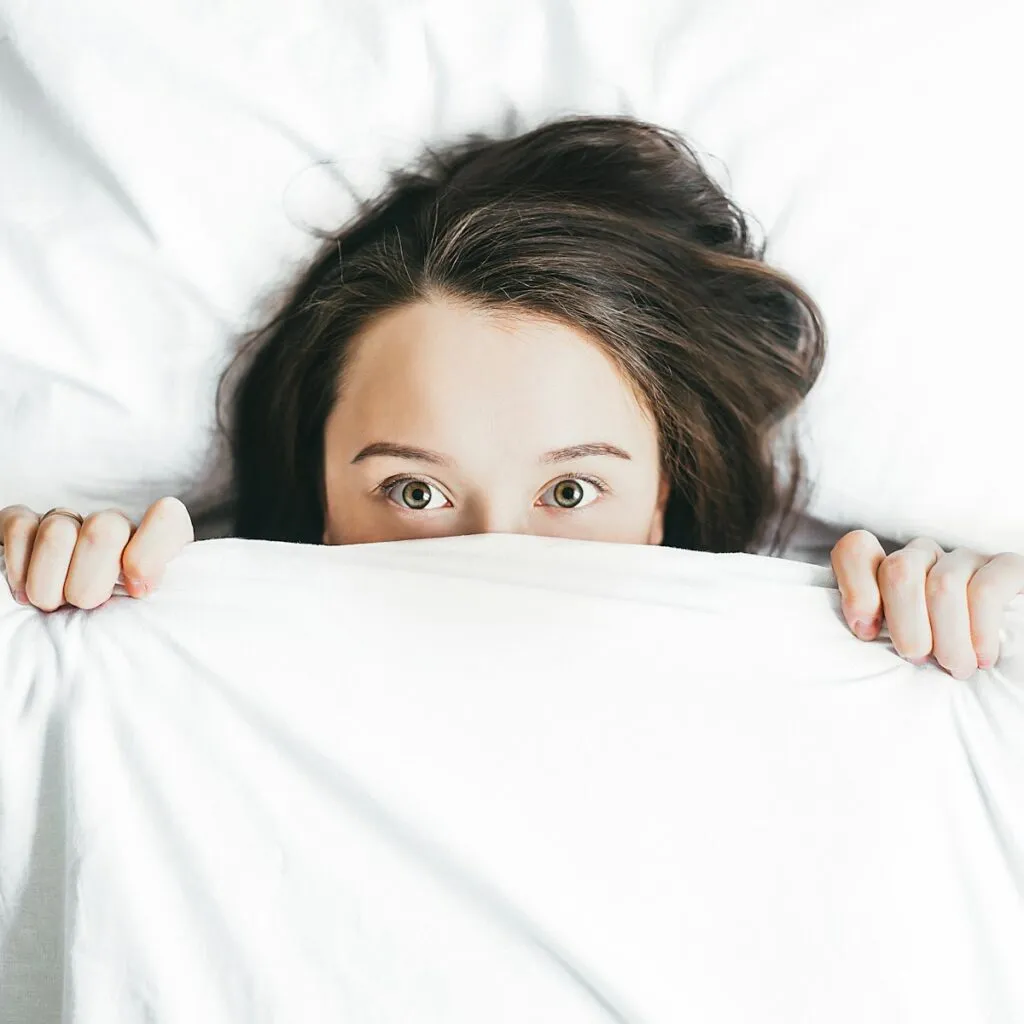
1. Insomnia: The Most Common Sleep Thief
Insomnia is the big one – the sleep disorder everyone’s heard of but nobody really understands. About 30% of adults experience insomnia symptoms, and roughly 10% have chronic insomnia that lasts for months or even years.
So what actually is insomnia? It’s not just having trouble falling asleep occasionally. Real insomnia means you consistently struggle to fall asleep, stay asleep, or you wake up way too early and can’t get back to sleep. And this happens at least three nights a week for at least three months.
I dealt with onset insomnia for two years before I did anything about it. Every single night, I’d lie in bed for 90 minutes minimum, just staring at the ceiling, thinking about every embarrassing thing I’d ever done since third grade. My brain would not shut off. The harder I tried to sleep, the more awake I became. It was like my mind was playing this cruel joke on me.
There’s also maintenance insomnia, where you fall asleep fine but wake up at 3 AM and can’t get back to sleep. My buddy Dave has this type, and he says it’s even more frustrating because he knows he’s wasting precious sleep time lying there awake.
What causes insomnia? Honestly, the list is long. Stress and anxiety are huge triggers. Major life changes. Medications. Too much screen time before bed. Irregular sleep schedules. Depression. Chronic pain. Even worrying about not sleeping can cause insomnia – how messed up is that?
The treatment approach depends on whether your insomnia is short-term (acute) or long-term (chronic). For acute insomnia, fixing the underlying issue usually helps. Had a stressful week at work? Once that project’s done, your sleep might bounce back.
Chronic insomnia needs more intensive treatment. Cognitive Behavioral Therapy for Insomnia (CBT-I) is considered the gold standard. I tried it, and honestly, it changed my life. It teaches you to rewire your brain’s association with the bed and sleep. No more lying there for hours. If you’re not asleep in 20 minutes, you get up and do something boring until you’re actually tired.
Sleep medications can help short-term, but they’re not a long-term solution. I took Ambien for three months, and while it worked, coming off it was brutal. Plus, you don’t get the same quality sleep with medication as you do naturally.
Here’s what actually helped me:
- Keeping a super consistent sleep schedule (even on weekends – yeah, it sucks at first)
- Creating a boring pre-sleep routine (no phones, no TV, just reading)
- Getting out of bed when I couldn’t sleep instead of lying there frustrated
- Writing down worries before bed so my brain could let them go
- Cutting caffeine after 2 PM (this was harder than quitting smoking, honestly)
The biggest lesson? Insomnia feeds on itself. The more you worry about not sleeping, the worse it gets. Breaking that cycle is everything.

2. Sleep Apnea: The Silent Sleep Destroyer
Sleep apnea is terrifying when you understand what’s actually happening. Your breathing literally stops during sleep. Sometimes hundreds of times per night. And most people who have it don’t even know.
Here’s a wild statistic: an estimated 22 million Americans have sleep apnea, but 80% of moderate to severe cases remain undiagnosed. That’s millions of people whose breathing stops repeatedly every night, and they have no clue.
There are two main types. Obstructive sleep apnea (OSA) is by far the most common. Your throat muscles relax too much during sleep, blocking your airway. Central sleep apnea happens when your brain doesn’t send proper signals to control breathing. There’s also complex sleep apnea, which is basically a combination of both.
I didn’t realize I had sleep apnea for almost three years. I just thought I was a terrible sleeper who snored a lot. My wife finally insisted I do a sleep study after she kept hearing me stop breathing at night. That scared her way more than it scared me, which is funny looking back because I was the one literally suffocating in my sleep.
The sleep study results were shocking. I stopped breathing 47 times per hour. My oxygen levels were dropping into the danger zone. No wonder I felt like garbage every single morning. My brain was being oxygen-deprived all night long.
Common signs of sleep apnea:
- Loud, chronic snoring (though not everyone who snores has sleep apnea)
- Witnessed breathing pauses during sleep
- Gasping or choking sounds
- Waking up with a dry mouth or sore throat
- Morning headaches
- Excessive daytime sleepiness no matter how long you “slept”
- Difficulty concentrating, memory problems
- Irritability and mood changes
Sleep apnea is serious business. It increases your risk for high blood pressure, heart disease, stroke, diabetes, and even depression. The constant oxygen deprivation and sleep fragmentation mess with pretty much every system in your body.
Treatment usually starts with CPAP therapy – Continuous Positive Airway Pressure. You wear a mask that delivers pressurized air to keep your airway open. I won’t lie, the first few weeks with my CPAP were rough. The mask felt weird, the air pressure took getting used to, and I felt like I was sleeping in a wind tunnel.
But after about three weeks? Life changing. Absolutely life changing. I woke up actually feeling rested for the first time in years. My energy came back. The brain fog lifted. My wife said I stopped being such a grumpy jerk in the mornings (her words, not mine).
Other treatment options include:
- Weight loss (even 10% body weight reduction can significantly improve OSA)
- Positional therapy (sleeping on your side instead of your back)
- Oral appliances that reposition your jaw
- Surgery in severe cases
The crazy thing is how many people quit CPAP therapy in the first month. They think it’s too uncomfortable or annoying. I get it – it’s not fun wearing a mask to bed. But the alternative is slowly destroying your health night after night. Once you actually experience quality sleep again, you’ll never want to go back.

3. Restless Legs Syndrome: More Than Just Fidgety Legs
Restless Legs Syndrome (RLS) sounds made up until you experience it. Then you realize it’s one of the most frustrating conditions on the planet.
RLS causes an overwhelming urge to move your legs, usually accompanied by uncomfortable sensations. People describe it as crawling, tingling, burning, itching, or pulling sensations deep in the legs. And here’s the kicker – it gets worse when you’re trying to rest or sleep. Exactly when you need to be still.
About 7-10% of people in the US have RLS to some degree. It’s more common in women and tends to get worse with age. I first experienced it after a particularly grueling week at work where I’d been sitting at my desk for 10-12 hours a day. At night, my legs felt like they were full of electricity. I had to keep moving them or get up and walk around.
The diagnostic criteria are actually pretty specific. You need four main symptoms: an urge to move your legs (usually with uncomfortable sensations), symptoms that get worse during rest or inactivity, symptoms that are relieved by movement, and symptoms that are worse in the evening or night.
What causes RLS? Sometimes it’s genetic – about 40-50% of people with RLS have a family member with it too. It can also be related to iron deficiency, pregnancy, kidney disease, diabetes, Parkinson’s disease, or certain medications (especially antihistamines and antidepressants).
My RLS was actually caused by low iron levels, which I discovered completely by accident during routine bloodwork. My ferritin (stored iron) was in the basement. Once I started taking iron supplements (under my doctor’s supervision), my RLS improved dramatically within a few weeks.
Things that made my RLS worse:
- Caffeine, especially after noon
- Alcohol (even just one beer)
- Sleep deprivation (creates a vicious cycle)
- Sitting for long periods
- Certain antihistamines like Benadryl
Things that helped:
- Iron supplementation (get your levels checked first!)
- Magnesium supplements before bed
- Regular exercise, but not right before bed
- Hot baths in the evening
- Compression socks during the day
- Walking around when symptoms hit
Some people need medication for severe RLS. Drugs that affect dopamine levels in the brain can be really effective. But they come with potential side effects and can sometimes make RLS worse over time (a phenomenon called augmentation).
The social impact of RLS is underrated. Try explaining to your partner why you can’t sit still during a movie, or why you keep kicking them at night. Try sitting through a long meeting or a flight when your legs are screaming at you to move. It’s exhausting and isolating when people don’t understand.

4. Narcolepsy: Not Just Falling Asleep Randomly
Narcolepsy is probably the most misunderstood sleep disorder out there. Thanks to movies and TV, everyone thinks it’s just people randomly falling asleep mid-sentence. That happens, but narcolepsy is way more complex and way more disruptive than pop culture suggests.
It’s actually a neurological disorder where the brain can’t properly regulate sleep-wake cycles. People with narcolepsy experience excessive daytime sleepiness and can have sudden, uncontrollable sleep attacks. It affects about 1 in 2,000 people, though many cases go undiagnosed for years.
There are two types. Type 1 narcolepsy comes with cataplexy – sudden loss of muscle tone triggered by strong emotions. Laugh too hard? Your knees might buckle. Get excited or angry? You might collapse. Type 2 narcolepsy doesn’t include cataplexy but still involves severe daytime sleepiness and other symptoms.
I don’t have narcolepsy, but my cousin Sarah does. Watching her struggle through college was heartbreaking. She’d fall asleep in classes despite getting a full night’s sleep. People thought she was lazy or didn’t care. Professors accused her of being disrespectful. The reality? Her brain was literally forcing her to sleep at inappropriate times, and there was nothing she could do about it.
Other symptoms of narcolepsy include:
- Sleep paralysis (waking up unable to move or speak – absolutely terrifying)
- Hallucinations when falling asleep or waking up
- Fragmented nighttime sleep (falling asleep easily but waking up frequently)
- Automatic behaviors (doing things on autopilot with no memory of it)
The cause of narcolepsy is still being researched, but Type 1 is linked to low levels of hypocretin (also called orexin), a brain chemical that regulates wakefulness. Scientists think it might be an autoimmune condition where the body attacks the cells that produce hypocretin.
Diagnosis requires a sleep study and usually a Multiple Sleep Latency Test (MSLT), where they measure how quickly you fall asleep during the day and whether you enter REM sleep abnormally fast.
Treatment typically involves stimulant medications to combat daytime sleepiness, and sometimes medications for cataplexy. Scheduled naps can also help. Sarah takes two 20-minute naps every day at specific times, and it’s made a huge difference in her quality of life.
Living with narcolepsy requires serious lifestyle adjustments. Maintaining a strict sleep schedule, avoiding alcohol and heavy meals, and educating people around you about the condition are all crucial. Sarah carries a medical alert card and has talked to her employer about her needs.
The emotional toll is real. Dealing with people who don’t believe your condition is legitimate, worrying about falling asleep while driving, and missing out on activities because you might have a sleep attack – it’s a lot. But with proper treatment and support, people with narcolepsy can live full, productive lives.
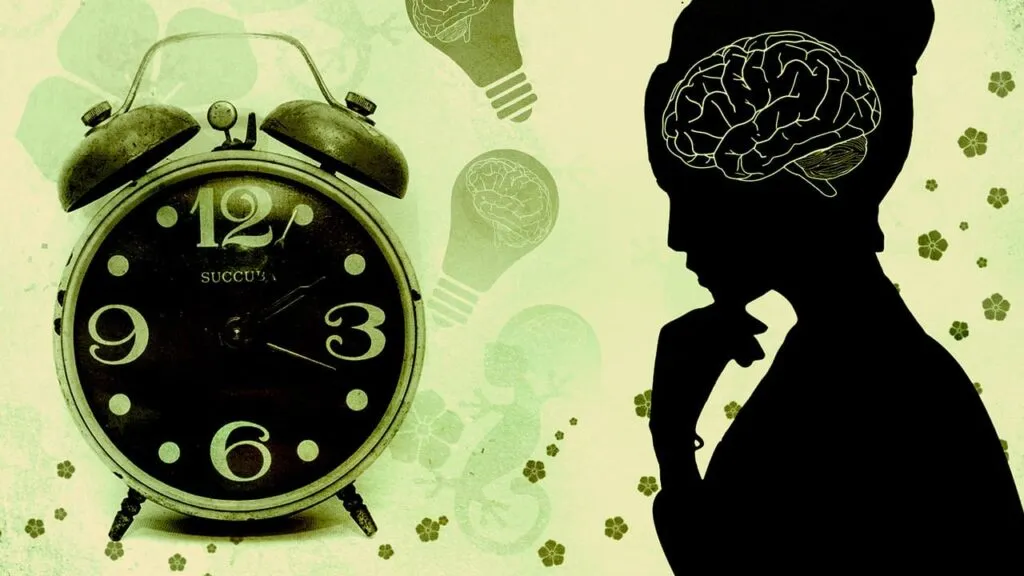
5. Circadian Rhythm Disorders: When Your Body Clock is Broken
Your circadian rhythm is basically your internal 24-hour clock that tells your body when to sleep and when to be awake. When that clock gets messed up, you’ve got a circadian rhythm disorder. And let me tell you, it’s way more than just being a “night owl.”
I experienced this firsthand during my years working rotating shifts. One week I’d work days, the next week nights, then back to days. My body had zero idea what time zone it was operating in. I was sleeping during the day with blackout curtains, trying to stay awake all night with coffee and energy drinks, and basically living in a constant state of jet lag.
Circadian rhythm disorders include several types:
Delayed Sleep-Wake Phase Disorder is when your natural sleep time is significantly later than typical. You might not feel sleepy until 2-4 AM and then sleep until noon or later. This isn’t just preference – your body genuinely doesn’t produce melatonin until way later than most people.
Advanced Sleep-Wake Phase Disorder is the opposite. You get extremely sleepy in the early evening (like 7-8 PM) and wake up super early (3-5 AM). This is more common in older adults.
Shift Work Disorder affects people who work nights or rotating shifts. Your work schedule fights against your natural circadian rhythm, and your body never fully adjusts. About 10-40% of shift workers have this condition. I definitely fell into this category during my shift work years.
Jet Lag Disorder happens when you travel across multiple time zones. Your internal clock is still operating in your home time zone while you’re physically somewhere else.
Non-24-Hour Sleep-Wake Disorder is when your internal clock runs longer than 24 hours, so your sleep time gets progressively later each day. This is most common in blind individuals who can’t perceive light cues.
The symptoms are pretty consistent across types: insomnia when you’re supposed to sleep, excessive sleepiness when you’re supposed to be awake, difficulty concentrating, mood problems, and increased health risks over time.
Light exposure is absolutely critical for managing circadian rhythm disorders. Your eyes have special cells that detect light and send signals to the brain’s master clock. During my shift work days, I tried everything: bright light therapy in the evening before night shifts, wearing blue-blocking glasses in the morning after night shifts, and keeping my bedroom pitch black during day sleep.
Melatonin supplements can help too, but timing is everything. Taking melatonin at the wrong time can actually make things worse. I learned this the hard way after taking melatonin at 6 PM before a night shift and spending the entire shift fighting to stay awake.
What helped me during shift work:
- Strategic caffeine use (only in the first half of my shift)
- Bright light exposure at specific times
- Melatonin 30 minutes before planned sleep time
- Maintaining consistent sleep durations even if timing varied
- Blackout curtains, white noise, and cool bedroom temperature
- Communicating with family about my sleep schedule
The harsh truth? Some people never fully adapt to shift work or circadian rhythm disruption. The health consequences of chronic circadian misalignment are serious: increased risk of obesity, diabetes, cardiovascular disease, depression, and even some cancers.
If you have a circadian rhythm disorder and can’t change your lifestyle (like if you’re stuck in shift work), treatment focuses on maximizing sleep quality, managing light exposure, and strategic use of melatonin or other sleep aids under medical supervision.
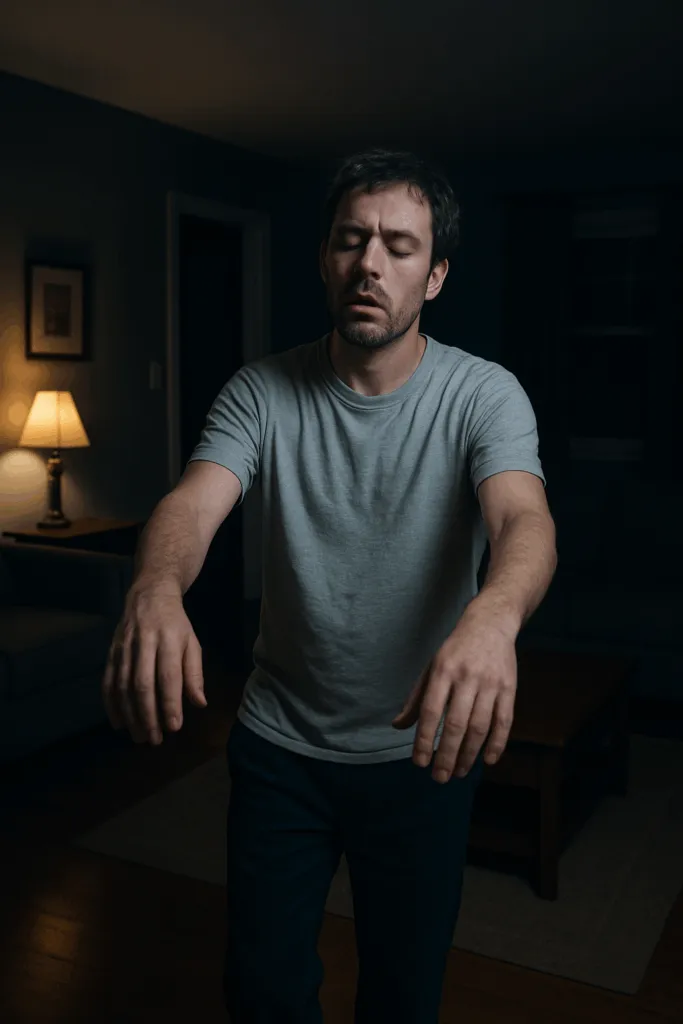
6. Parasomnias: When Weird Things Happen During Sleep
Parasomnias are basically abnormal behaviors that happen during sleep. This category includes everything from sleepwalking to night terrors to sleep eating. And yes, these are real medical conditions, not just entertaining stories for parties.
Sleepwalking (somnambulism) is probably the most well-known parasomnia. People get up and walk around while still asleep, sometimes doing complex behaviors like eating, moving furniture, or even driving. About 4% of adults and up to 17% of children sleepwalk. I had a roommate in college who would regularly get up, grab his guitar, and play while completely asleep. He never remembered it in the morning.
Sleep terrors (night terrors) are different from nightmares. They happen during non-REM sleep, usually in the first few hours. People bolt upright, scream, thrash around, and seem terrified but aren’t actually awake. They usually don’t remember the episode. My daughter went through a phase of these around age five, and it was absolutely terrifying for us even though she was fine in the morning.
REM Sleep Behavior Disorder (RBD) is where people physically act out their dreams. Normally, you’re paralyzed during REM sleep to prevent this. With RBD, that paralysis doesn’t happen. People might punch, kick, jump out of bed, or run around. This can be really dangerous. My uncle has this condition and once punched through his bedroom window during a dream about fighting someone.
Sleep eating disorder is exactly what it sounds like. People raid the refrigerator while asleep and often eat bizarre combinations of food. They don’t remember it in the morning, just wonder why there’s peanut butter on the kitchen floor and raw pasta in the sink.
Sleep paralysis technically isn’t a disorder on its own but can be part of narcolepsy or just occur independently. You wake up but can’t move or speak for several seconds to minutes. Often accompanied by hallucinations. This happened to me three times during a particularly stressful period, and I genuinely thought I was dying each time. Your mind is awake and panicking while your body is still in sleep paralysis mode.
Common triggers for parasomnias:
- Sleep deprivation (huge factor)
- Stress and anxiety
- Irregular sleep schedules
- Alcohol consumption
- Certain medications
- Fever in children
Treatment depends on the specific parasomnia. For sleepwalking, safety is the priority – securing windows, removing dangerous objects, maybe even installing alarms on bedroom doors. For RBD, medication can help reduce symptoms. For sleep terrors in kids, they often outgrow them, but maintaining good sleep hygiene helps.
I dealt with a brief period of sleep paralysis when I was in my late twenties and working crazy hours. What helped was getting back to a regular sleep schedule, reducing stress through meditation, and sleeping on my side instead of my back (which seems to trigger episodes for some people).
The psychological impact of parasomnias shouldn’t be underestimated. Worrying about what you might do while asleep creates anxiety around sleep itself. If you’re punching your partner in your sleep or waking up with unexplained injuries, that’s legitimately scary. Professional help is definitely warranted.
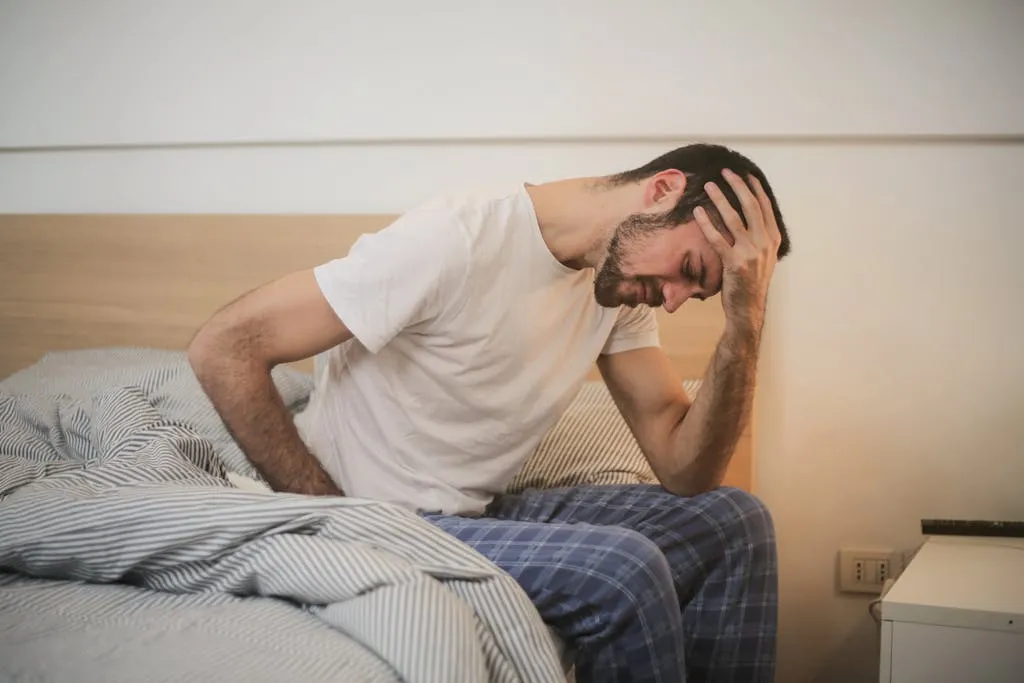
7. Hypersomnia: More Than Just Being Tired
Hypersomnia is excessive sleepiness that persists despite adequate or even excessive sleep. We’re not talking about being tired after a bad night’s sleep. This is sleeping 10+ hours and still feeling exhausted. It’s overwhelming daytime sleepiness that doesn’t go away no matter how much you rest.
Idiopathic hypersomnia (IH) affects about 50 per million people, though it’s likely underdiagnosed. People with IH sleep long hours at night, have extreme difficulty waking up (called sleep drunkenness or sleep inertia), and feel sleepy throughout the day. Naps don’t help – you might sleep for two hours and wake up feeling even groggier.
I have a friend with idiopathic hypersomnia, and watching her struggle is frustrating because people just don’t get it. They see someone who sleeps 12 hours a night and still takes naps and think she’s lazy. The reality is her brain is in a constant state of sleep pressure that no amount of sleep relieves.
Key differences between hypersomnia and just being tired:
- Sleepiness is constant and severe, lasting at least three months
- Getting adequate or excessive sleep doesn’t help
- Significant impairment in work, school, or social functioning
- Not better explained by another sleep disorder or medication side effects
Causes of hypersomnia can include:
- Neurological conditions affecting the sleep-wake system
- Head trauma
- Depression (but hypersomnia can exist independently)
- Some medications
- Genetics (it often runs in families)
Diagnosis requires ruling out other sleep disorders through sleep studies. Doctors measure total sleep time, sleep quality, and daytime sleepiness using specialized tests.
Treatment is challenging. Stimulant medications can help combat daytime sleepiness, but they don’t address the underlying issue. Some people respond to modafinil or armodafinil. Lifestyle modifications like scheduled naps, bright light therapy, and strict sleep schedules provide some relief.
My friend manages her IH through a combination of medication, a very strict sleep schedule (same bedtime and wake time every single day, even weekends), strategic napping, and being honest with her employer about her condition. She’s had to advocate hard for herself, especially when people assume she’s just not trying hard enough.
The social stigma around hypersomnia is real. Living in a society that values productivity and equates sleep with laziness makes having hypersomnia incredibly difficult. Missing social events because you’re too sleepy, struggling to maintain relationships, and dealing with judgment from people who don’t understand – it all takes a toll.
Conclusion: Getting Help for Your Sleep Disorder
Here’s the truth I wish someone had told me years ago: if you consistently struggle with sleep, something is probably wrong, and you deserve to figure out what it is. Sleep disorders are real medical conditions that respond to treatment. You’re not weak, lazy, or broken – you’re dealing with a health issue that deserves attention.
I wasted years suffering through terrible sleep because I thought everyone felt that way. I normalized being exhausted, irritable, and unable to focus. It wasn’t until my sleep disorders were diagnosed and treated that I realized just how bad I’d been feeling.
If you recognize yourself in any of these descriptions, here’s what to do:
First, keep a sleep diary for at least two weeks. Track when you go to bed, when you actually fall asleep, how many times you wake up, when you wake up in the morning, and how you feel during the day. Note any symptoms like snoring, leg movements, or difficulty waking up. This information is gold for your doctor.
Second, talk to your primary care doctor. They can rule out underlying medical issues and refer you to a sleep specialist if needed. Don’t downplay your symptoms or worry about sounding dramatic. Be specific about how your sleep issues affect your daily life.
Third, consider a sleep study. They’re not fun – you’re sleeping in an unfamiliar place with wires attached to you – but they provide invaluable information. Home sleep tests are also available now for certain disorders like sleep apnea.
Fourth, be patient with treatment. Finding the right solution often takes time. I tried three different CPAP masks before finding one that worked. I adjusted my insomnia treatment multiple times. Stick with it.
And finally, don’t go it alone. Connect with others dealing with similar issues. Support groups, online communities, and even just talking to understanding friends can make a huge difference. Sleep disorders can be isolating, but you’re definitely not alone in this struggle.
Sleep apnea is terrifying when you understand what’s actually happening. Your breathing literally stops during sleep. Sometimes hundreds of times per night. And most people who have it don’t even know.
What’s your experience with sleep disorders? Have you been diagnosed with any of these conditions? I’d love to hear what’s worked for you in the comments below!
